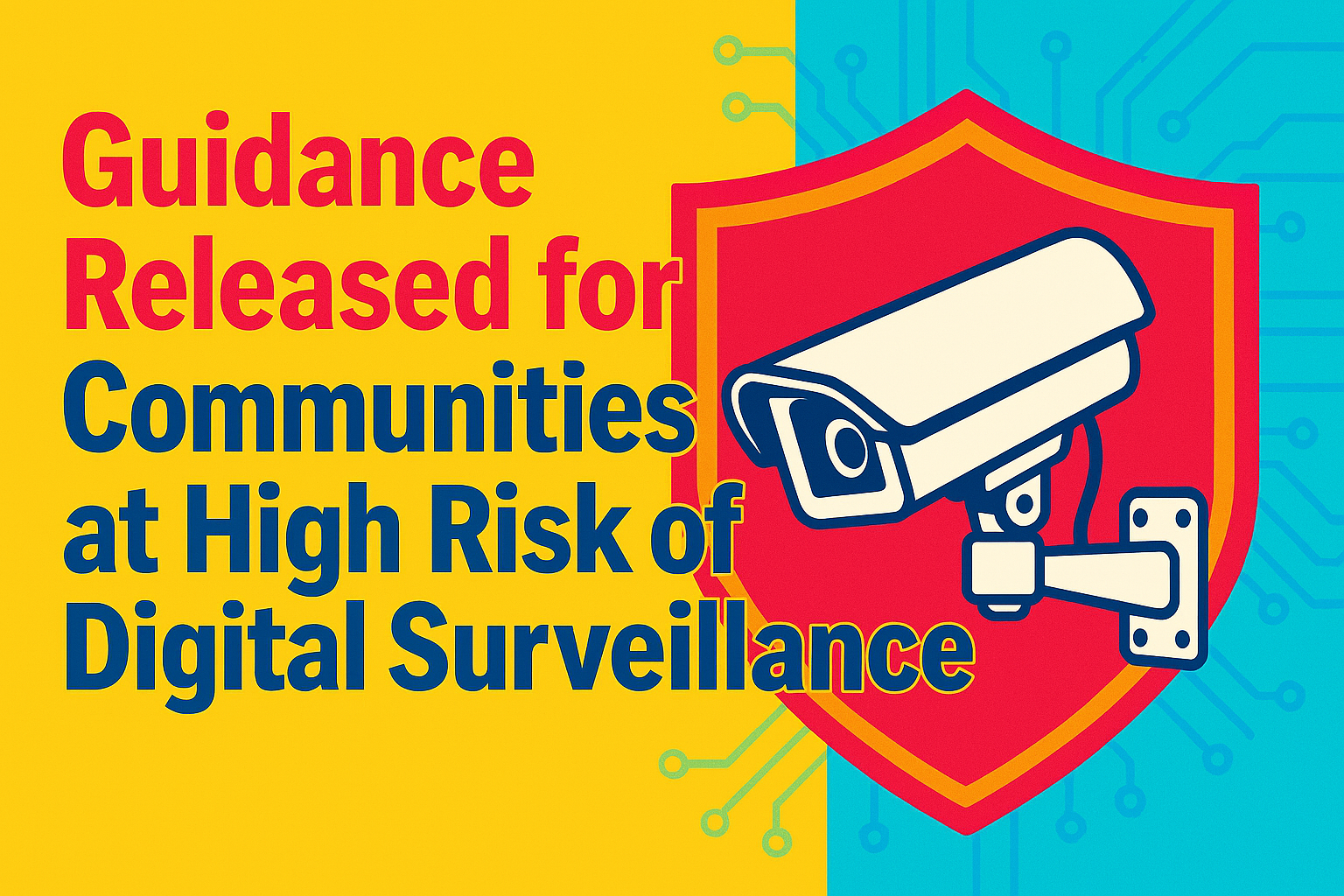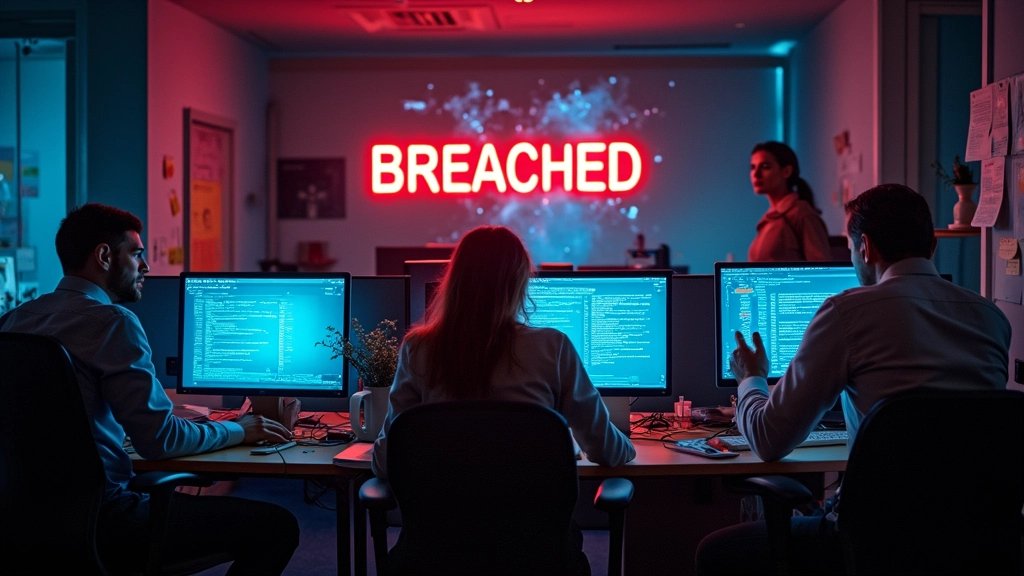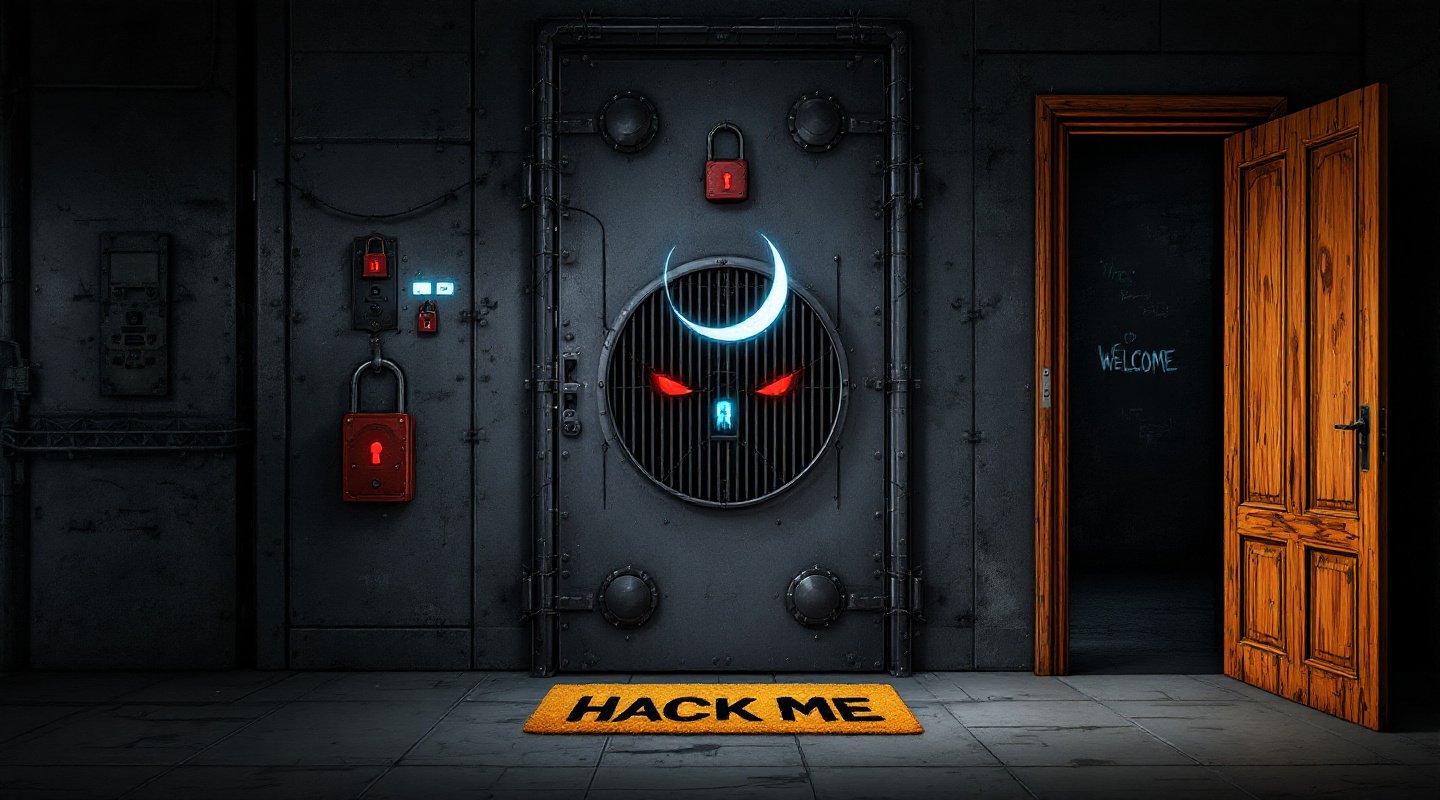
The Small Business
Cyber Security Guy
Welcome to my blog and podcast, where I share brutally honest views, sharp opinions, and lived experience from four decades in the technology trenches. Whether you're here to read or tune in, expect no corporate fluff and no pulled punches.
Everything here is personal. These are my thoughts, not those of my employer, clients, or any poor soul professionally tied to me. If you’re offended, take it up with me, not them.
What you’ll get here (and on the podcast):
Straight-talking advice for small businesses that want to stay secure
Honest takes on cybersecurity trends, IT malpractice, and vendor nonsense
The occasional rant — and yes, the occasional expletive
War stories from the frontlines (names changed to protect the spectacularly guilty)
I've been doing this for over 40 years. I’ve seen genius, idiocy, and everything in between. Some of it makes headlines, and most of it should.
This blog and the podcast is where I unpack it all. Pull up a chair.

How to Stay Safe Online if You're at High Risk: NCSC's New Surveillance Guidance Explained
The internet isn’t a safe space for everyone — especially if you’re a journalist, activist, or survivor of abuse. The UK’s National Cyber Security Centre (NCSC) has released new guidance for people and communities at high risk of digital surveillance. And unlike most government advice, this is actually worth reading.
It’s direct, useful, and designed for the real world — covering everything from encrypted messaging to avoiding spyware.
Whether you're at risk or supporting someone who is, this guide offers clear, practical steps to help you stay safer online when the consequences of being tracked could be life-altering.

April 2025 Patch Tuesday: What You Need to Know
Act now or risk breach: Microsoft’s April 2025 Patch Tuesday just dropped with 121 fixes—and one is already being actively exploited in the wild. From remote desktop gateways to Office and authentication systems, these vulnerabilities target everything you rely on.
Think your network is safe? Think again. With privilege escalation bugs, Hyper-V escapes, and Kerberos enforcement changes, this update isn’t optional—it’s urgent.
Don’t let today’s Patch Tuesday become tomorrow’s security incident. Whether you’re an IT lead or managing critical systems, this one demands immediate attention. Read the full breakdown, patch fast, and stay one step ahead of Exploit Wednesday.

Snap, Crackle, Compromise: How Kellogg's Quietly Served Up Employee Data to Hackers
Think your breakfast is safe? Think again. WK Kellogg Co.—yes, the cereal giant—just had employee data spilled thanks to a third-party software breach. Hackers from the Clop ransomware gang waltzed in via Cleo’s "secure" file transfer platform and helped themselves to names, addresses, and Social Security numbers.
It’s another textbook example of supply chain negligence dressed up as digital transformation.
If your business relies on vendors without grilling their security, you might as well start pouring milk on your firewall and calling it breakfast. Here's how it happened—and why it should scare the cereal out of you.

Breach of the Month Club: March 2025 Edition
Welcome to the inaugural edition of Breach of the Month Club™, your monthly tour of reputational disaster.
March 2025 was a banner month for avoidable breaches, from Lloyds accidentally mailing out million-pound statements, to Jaguar Land Rover getting wrecked by leaked JIRA credentials.
Reform UK ignored GDPR completely, Morrisons got battered by a supplier breach, and 23andMe? Well, they lost your DNA and filed for bankruptcy.
We break it all down with just the right amount of sarcasm—and a reminder that no company is too big to fail at basic cyber hygiene.

Unprecedented Surge: Nearly 24,000 IPs Target PAN-OS GlobalProtect Gateways in Coordinated Attack
Nearly 24,000 IP addresses just launched a coordinated scan on Palo Alto Networks’ GlobalProtect gateways — and if you think this was random, think again. This wasn’t a glitch in the matrix or some bored script kiddie.
It was targeted, global, and likely the opening move in something far bigger. If you’re running PAN-OS at the edge of your network and haven’t patched recently, you’re on the menu.
This article breaks down what happened, what it means, and what you need to do right now before your firewall turns into a front door. Spoiler: hope is not a security strategy.

Apple’s 3 Zero-Days: If You Haven’t Updated Yet, What Are You Even Doing With Your Life?
Apple has dropped emergency updates to fix three zero-day vulnerabilities—and yes, they’re already being exploited.
These flaws affect iPhones, iPads, Macs, and more, letting attackers bypass USB protections, escape Safari’s sandbox, and escalate privileges through CoreMedia.
If you’re not updating your devices right now, you’re basically rolling out the red carpet for hackers. This isn’t just another patch Tuesday. It’s a loud, flashing red warning. Your move.

What to Expect from Your Incident Manager (And Why You Shouldn’t Try to Wing a Cyber Crisis Without One)

"We’ve Been Breached!" – What UK SMBs Must Do in the First 24 Hours (and Why Most Get It Wrong)
A cyber breach isn’t just an IT headache—it’s a full-blown business crisis. If you run a small UK business and your systems are compromised, your next 24 hours are critical.
This guide walks you through what to do and why—from shutting the breach down without wiping forensic evidence, to dealing with regulators, staff, and customers. Most importantly, it makes clear that your MSP or IT team should not be leading the response.
You need an independent Incident Manager and a solid plan. No fluff. No jargon. Just the straight facts to help you limit damage and recover fast.

How Long Has a Hacker Been Living Rent-Free in Your Business? IBM's Dwell Time Report Explained for UK SMBs
A hacker could be hiding in your business for over nine months before you even notice—and IBM has the stats to prove it. Their latest report shows UK small businesses are dangerously exposed to long dwell times, where cybercriminals quietly steal data, cause chaos, and vanish before anyone sounds the alarm. If you're not actively looking for threats, you're practically inviting them in. Here's what dwell time means for your business—and how to slam the door shut.

NHS Software Supplier Ransomwared – Gets a £3M Discount for Being Helpful?
So naturally… the ICO fined them £4.4 million.
And then knocked £3 million off for being helpful afterwards.
Yes, really. That’s the cybersecurity equivalent of “you crashed the car but said sorry nicely—so we’ll waive the repair bill.”
I’ve written a new piece on this absolute masterclass in weak governance, supplier accountability theatre, and the dangerous precedent it sets.

UK Businesses Under Siege: Over Half Hit by Cyberattacks in 2024—Are You Next?
Over half of UK businesses got digitally f**ked last year—and most didn’t even realise until it was too late. While leadership played buzzword bingo, ransomware crews strolled in through weak passwords and forgotten patches. Attacks hit every 44 seconds. Still think “we’re too small to be a target” holds up? It doesn’t. Hope isn’t a strategy. Luck isn’t resilience. And if you’ve got no plan, you’re just waiting to be the next headline.

Microsoft Breaks Remote Desktop (Again): What SMBs and IT Pros Need to Know
Microsoft’s at it again—this time breaking Remote Desktop for Windows 11 users with their latest round of updates. If your helpdesk tickets are piling up with RDP disconnects and login weirdness, you’re not alone.
From silent session drops to broken smart card authentication, this bug is hitting SMBs and IT pros where it hurts. We unpack what’s going wrong, who’s affected, and how to survive it—while Microsoft casually promises a fix “at some point.” Spoiler: rollback might be your only friend.

Why London's 5G is the Worst in Europe (But It Doesn’t Have to Be)
London ranks dead last for 5G performance in Europe – but it’s not just the capital struggling. Across the UK, coverage is patchy, motorway connectivity is unreliable, and performance wildly varies between networks.
Yet where it’s deployed properly, UK 5G can rival the best on the continent.
The problem? Not the tech – the execution. Less hype, more follow-through, and a proper plan could turn the UK’s 5G fortunes around.

Your Office Spends More on Coffee Than Cybersecurity Training—and That’s How You Get Hacked
Most UK businesses spend more on coffee than on Cyber Security Awareness Training—and that’s exactly how breaches happen. Your biggest threat isn’t a hacker in a hoodie; it’s Dave in Sales clicking a dodgy email.
The good news? Quality training is cheap, effective, and actually enjoyable. For less than the cost of your weekly latte run, you can turn your staff from cyber risks into cyber defenders.
Still think you can’t afford it? Think again.

Fake CAPTCHAs Are Now Malware Traps – Because Of Course They Are!
Think you’re safe clicking through a CAPTCHA? Think again. Cybercriminals are hijacking your trust with fake CAPTCHA pop-ups that trick you into downloading malware—by following simple keyboard instructions you’d never question. One click and boom—your passwords, wallets, and entire digital life are up for grabs. This isn’t just clever, it’s terrifyingly effective. If you’ve ever hit "I’m not a robot," you need to read this before you hand your system over to hackers.

Your Bluetooth Devices Might Be Spying on You – And It’s Not Even Your Fault
Think your Bluetooth devices are safe? Think again. Security researchers just found hidden, undocumented commands in the ESP32 chip—used in over a billion devices worldwide. This means hackers could exploit your smart gadgets, from speakers to security cameras, without you ever knowing. And the best part?
Manufacturers didn’t tell anyone. Is your tech spying on you? Maybe. Here’s what you need to know—and how to protect yourself before it’s too late. 🚨

DrayTek Disaster: Why Your Business Wi-Fi Just Became a Cybersecurity Liability
A critical flaw in DrayTek routers is wreaking havoc on UK broadband connections — and no, this isn’t just a “techie problem.” Businesses across the country are unknowingly running vulnerable, outdated routers that are now being blocked by ISPs for good reason.
DNS hijacks, remote code execution, and silent compromises are all in play. If you're still clinging to your 2018 networking gear like it’s a family heirloom, it’s time to wake up. This isn’t about cost — it’s about negligence. Here’s what’s going on, why it matters, and what to do before your internet (and reputation) vanishes.

2-Step Verification: The Absolute Bare Minimum for People Who Actually Give a Damn
If you're still not using 2-Step Verification (2SV), you might as well leave your front door wide open, bake some cookies for the burglars, and leave a note that says, "Take what you like, I clearly don’t give a shit." Sounds ridiculous? So does ignoring the absolute bare minimum of online security. Passwords alone are about as effective as a chocolate teapot, and cybercriminals love people who think 2SV is “too much hassle.” If typing in a short code now and then feels like a chore, maybe the internet isn’t for you. Get 2SV enabled before you end up Googling, "What to do when my bank account is emptied?"

Lazarus Strikes Again: North Korean Hackers Crash the NPM Party
North Korea's Lazarus hackers are back, gleefully slipping malicious code into popular NPM packages—think razor blades hidden in your Halloween sweets. Hundreds of developers unwittingly invited cybercriminals into their digital lives, losing sensitive data and perhaps some self-respect. This latest supply-chain fiasco underscores a crucial lesson: trust no package blindly.
Treat your code dependencies like milk—check regularly, or risk finding something unpleasantly chunky in your morning coffee. Vigilance isn't optional; it's essential.

You Wouldn't Share Your Toothbrush—So Why Share Your Password?
Discover why sharing your password is just as gross—and risky—as sharing your toothbrush. Learn practical tips like the three-random-words method and how password managers keep your digital hygiene squeaky clean!
⚠️ Full Disclaimer
This is my personal blog. The views, opinions, and content shared here are mine and mine alone. They do not reflect or represent the views, beliefs, or policies of:
My employer
Any current or past clients, suppliers, or partners
Any other organisation I’m affiliated with in any capacity
Nothing here should be taken as formal advice — legal, technical, financial, or otherwise. If you’re making decisions for your business, always seek professional advice tailored to your situation.
Where I mention products, services, or companies, that’s based purely on my own experience and opinions — I’m not being paid to promote anything. If that ever changes, I’ll make it clear.
In short: This is my personal space to share my personal views. No one else is responsible for what’s written here — so if you have a problem with something, take it up with me, not my employer.
